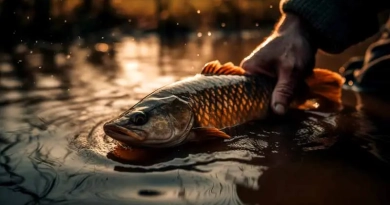
How do I choose the best locations for canoeing based on my skill level?
Paddling Through: Choosing the Best Canoeing Locations for Your Skill Level
How do I choose the best locations for canoeing based on my skill level? This question resonates deeply as I sit by the bank, watching the river carve its path through the landscape. The right choice of location can turn a simple paddle into a transformative adventure, suited to one’s abilities and challenges. It’s not just about finding water; it’s about discovering where that water can take you, both in skill and spirit.
Mapping the Terrain of Options and Obstacles
Selecting the ideal canoeing location involves a deep understanding of the waterway’s characteristics and the necessary precautions to ensure a safe and enjoyable experience. This decision-making process extends far beyond the visual appeal of a spot, addressing several critical factors that affect your paddling experience.
Understanding Waterway Classifications
Water bodies are incredibly diverse, each presenting a unique set of conditions that can significantly influence the canoeing experience. They are typically classified according to a grading system that helps paddlers understand the difficulty they might encounter:
- Flat Water: These are generally calm and wide water bodies, suitable for beginners or those looking for a relaxing paddle.
- Whitewater: Characterized by rapid currents and requiring more skillful handling, whitewater rivers are graded from I (easy) to VI (extreme danger), indicating the level of technical skill required.
This classification is crucial because it helps paddlers match their skill levels with appropriate challenges, ensuring safety while promoting skill development.
Accessibility and Safety Concerns
For novice paddlers, the accessibility of waterways is a paramount concern. Beginners should look for locations that are not only easy to reach but also offer safe and manageable conditions. This might mean choosing parks with designated canoeing areas or small lakes known for their calm waters. As paddlers gain more experience, they may seek more challenging environments, which inherently come with greater risks. This progression requires careful planning to ensure that the increase in difficulty does not compromise safety. Key considerations include:
- Proximity to help or rescue facilities in case of emergencies.
- Well-marked routes and clear signage to prevent getting lost.
- Regular maintenance and checks of the waterway to ensure it is free from hazardous obstacles.
Environmental Conditions
Weather patterns and seasonal changes can dramatically alter the conditions of a waterway. For instance, a lake that is calm during summer can become treacherous in the windy conditions of autumn. Understanding these environmental factors is essential:
- Seasonal Weather: Be aware of the seasonal variations in weather that could affect water levels and currents.
- Water Temperature: Cold water conditions pose risks such as hypothermia, even in seemingly safe water bodies.
- Recent Weather Events: Heavy rains can swell rivers and increase current speeds unexpectedly, turning a familiar route into a dangerous journey.
Navigating to the Best Solution
To effectively select the best canoeing locations suited to your skill level, consider the following steps:
- Assess Your Skill Level: Conduct an honest evaluation of your abilities. If you’re new to canoeing, opt for calm, flat waterways that allow you to focus on learning basic techniques without the stress of strong currents or navigation challenges.
- Research and Resources: Leverage the expertise of established organizations like the American Canoe Association, which offers guides on different waterways, detailing their difficulty levels and the skills required. Local paddling clubs can also be invaluable resources, providing insights into regional waterways and their current conditions.
- Check Local Conditions: Before planning a trip, consult real-time data from reliable sources like the US Geological Survey, which offers up-to-date information on water flow rates and levels. This step is crucial for ensuring the chosen location is in a safe condition for your planned outing.
- Start with Guided Tours: If you’re exploring a new area or stepping up to a more challenging level, consider booking a guided tour. Experienced guides can provide a safer environment and offer tips tailored to the specific waterway and its challenges. This is especially beneficial in unfamiliar or more demanding water bodies.
By methodically evaluating these factors, you can choose canoeing locations that not only match your skill level but also enhance your development as a paddler, ensuring each journey on the water is both safe and rewarding.
Essential Tools for Your Canoeing Journey
Choosing the right location also means having the right tools and resources:
- Detailed Maps and Guides: Invest in detailed waterway maps and guides that provide information about access points, portage routes, and potential hazards.
- Safety Gear: Always equip yourself with the appropriate safety gear, including a life jacket, helmet for rough waters, and a rescue kit.
- Communication Devices: Carry a waterproof phone case or a GPS device, especially when venturing into less familiar or more challenging waters.
Conclusion: The Journey Awaits
Choosing the best locations for canoeing based on skill level is about understanding both the waters and yourself. It’s a blend of excitement and caution, an adventure that grows with every stroke. With the right location, what begins as a simple day on the water can transform into a journey of self-discovery and skill enhancement. As I pack up my gear and prepare to set out, the river seems to whisper an invitation to explore, learn, and, above all, to respect the powerful beauty of the waters we choose to navigate.






